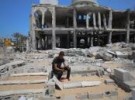Regime change wouldn’t likely bring democracy to Iran. A more threatening force could fill the vacuum
The timing and targets of Israel’s attacks on Iran tell us that Prime Minister Benjamin Netanyahu’s short-term goal is to damage Iran’s nuclear facilities in order to severely diminish its weapons program.
But Netanyahu has made clear another goal: he said the war with Iran “could certainly” lead to regime change in the Islamic republic.
These comments came after an Israeli plan to assassinate the supreme leader of Iran, Ayatollah Ali Khamenei, was reportedly rebuffed by United States President Donald Trump.
It’s no secret Israel has wanted to see the current government of Iran fall for some time, as have many government officials in the US.
But what would things look like if the government did topple?
Founded in 1979 after the Iranian Revolution, the Islamic Republic of Iran has democratic, theocratic and authoritarian elements to its governing structure.
The founding figure of the Islamic republic, Ayatollah Ruhollah Khomeini, envisioned a state run by Islamic clerics and jurists who ensured all policies adhered to Islamic law.
As Iran was a constitutional monarchy before the revolution, theocratic elements were effectively grafted on top of the existing republican ones, such as the parliament, executive and judiciary.
Iran has a unicameral legislature (one house of parliament), called the Majles, and a president (currently Masoud Pezeshkian). There are regular elections for both.
But while there are democratic elements within this........






















 Toi Staff
Toi Staff Gideon Levy
Gideon Levy Tarik Cyril Amar
Tarik Cyril Amar Omar Mohammed
Omar Mohammed Yara Hawari
Yara Hawari Maximilian Hess
Maximilian Hess Dr Ramzy Baroud
Dr Ramzy Baroud Rachel Marsden
Rachel Marsden Somdeep Sen
Somdeep Sen Fernando Romero Nuñez
Fernando Romero Nuñez
